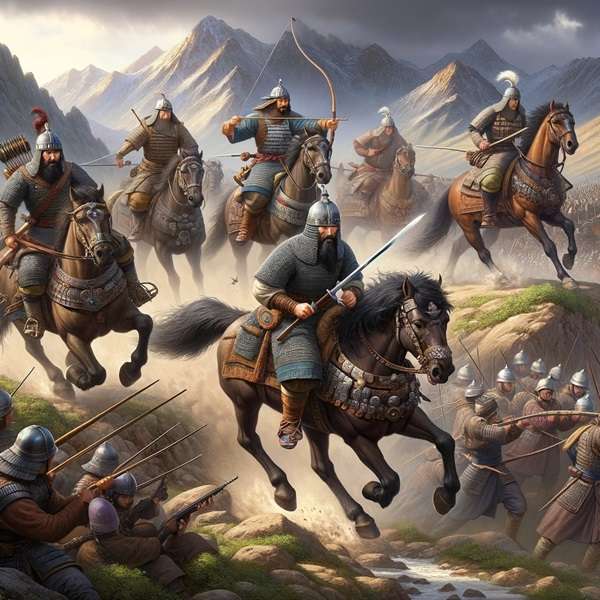Introduction

The Mongol invasions of Korea, spanning from 1231 to 1259, stand as a significant chapter in the annals of Korean history. This period marked not only a military clash but also a confrontation of cultures and ideologies. In this blog post, we delve into the intricate details of this historical event, exploring the reasons behind the invasions, the military strategies employed, and the lasting impacts on Korean society and its subsequent development.
Background: The Rise of the Mongol Empire
The early 13th century witnessed the rapid expansion of the Mongol Empire under Genghis Khan. With an unmatched cavalry and a reputation for ruthless efficiency, the Mongols conquered vast territories in Asia. Their eyes soon turned to the Korean Peninsula, ruled by the Goryeo Dynasty, which they saw as a strategic asset in their broader campaign to dominate East Asia.
The First Invasion: Sparking the Conflict
The initial Mongol invasion of Korea in 1231 was a direct consequence of Goryeo’s refusal to submit to Mongol rule. The Mongols, with their superior military tactics and a cavalry adept in warfare, quickly overran the northern defenses of Goryeo. The Korean forces, although valiant, were not prepared for the ferocity and speed of the Mongol attacks.
Goryeo’s Resistance and Guerrilla Warfare
Despite the initial setbacks, Goryeo’s response was resilient. The Korean military adapted to guerrilla tactics, leveraging the mountainous terrain of the peninsula to their advantage. This shift in strategy led to several successful engagements against the Mongols, showcasing the indomitable spirit of the Korean warriors.
Diplomacy and Tribute: Temporary Reprieves
Throughout the invasions, periods of intense fighting were interspersed with diplomatic negotiations. The Goryeo court, seeking to minimize destruction, often resorted to paying tribute to the Mongols. These temporary truces, however, were fragile and repeatedly broken, leading to further invasions.
The Role of Civilian Resistance and the Sambyeolcho Rebellion
The unyielding spirit of the Korean people was epitomized by the Sambyeolcho Rebellion, an independent military group formed by the Goryeo people. This group resisted the Mongol forces fiercely, symbolizing the national sentiment against foreign domination.
The Mongol Influence on Korean Culture and Technology
The prolonged Mongol presence in Korea led to significant cultural and technological exchanges. Korean craftsmanship, particularly in ceramics, was influenced by Mongol tastes. Additionally, the invasions led to the introduction of new military technologies and administrative practices in Korea.
Conclusion: The Legacy of the Mongol Invasions
The Mongol invasions of Korea were more than a series of military campaigns; they were a catalyst for significant socio-political changes. The aftermath saw the weakening of the Goryeo Dynasty and the rise of a new class of military leaders, setting the stage for future political shifts in Korea. This historical event, therefore, holds a crucial place in understanding the evolution of Korean society and its enduring resilience.
The Imjin War (1592-1598): Korea’s Epic Struggle Against Japanese Invasion
Hi, I’m [jeybee]. As a long-time resident of Seoul, I’m passionate about uncovering the authentic, everyday magic of Korea. This blog is my way of sharing my favorite spots, tips, and cultural insights with you, beyond the usual tourist traps.

